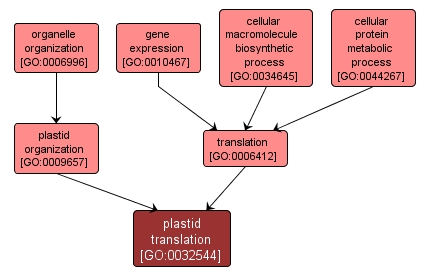| Desc: |
The chemical reactions and pathways resulting in the formation of a protein in a plastid. This is a ribosome-mediated process in which the information in messenger RNA (mRNA) is used to specify the sequence of amino acids in the protein; the plastid has its own ribosomes and transfer RNAs, and uses a genetic code that differs from the nuclear code. |














